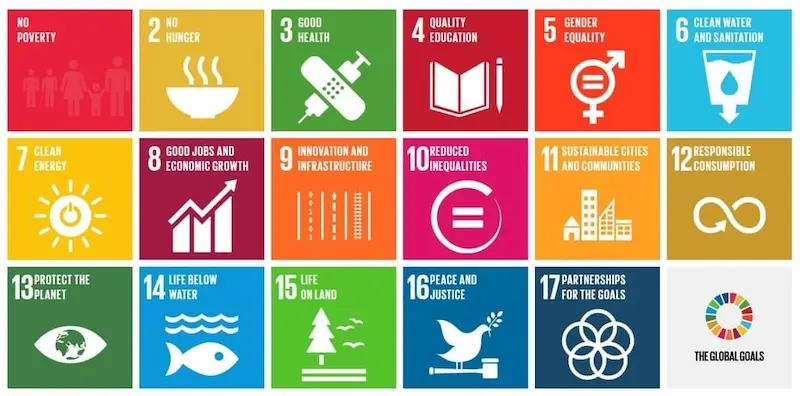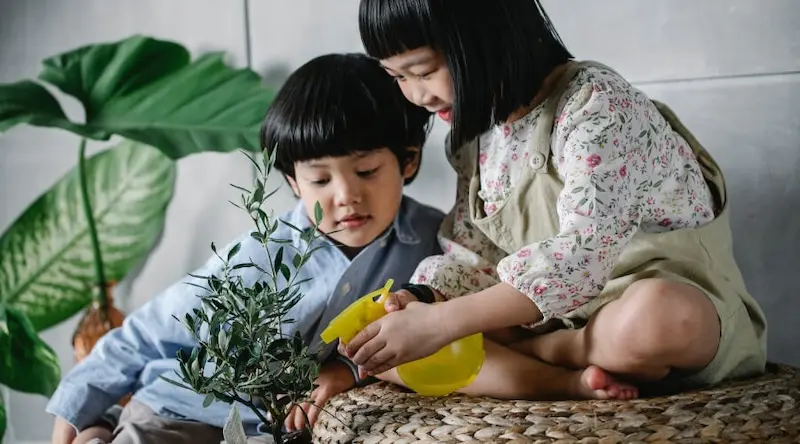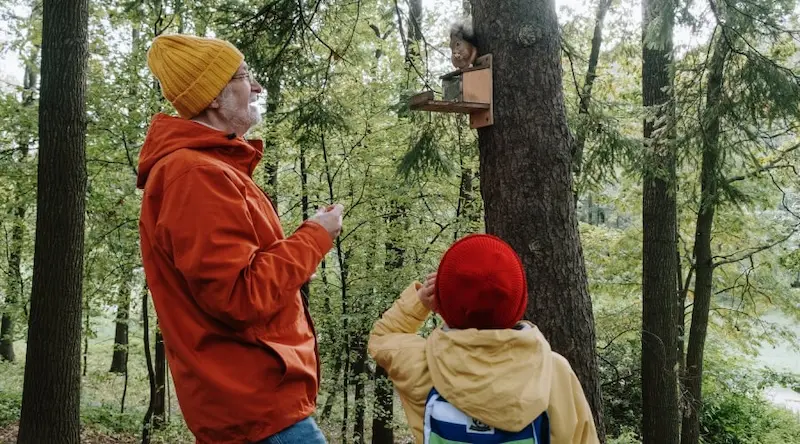settings
children
With Famly since
As a practitioner, you have an incredible power in making the world a little greener.
Education is a powerful pathway to sustainability, and it’s our role as Early Years leaders to sow those seeds. But before we get there, we need to make sure we’re introducing sustainability into our leadership, our pedagogy and our practice.
Sustainability is not a subject or part of an environmental programme, it’s central to a child’s whole experience, and needs to be part of a broad and inclusive quality education.
At LEYF, our social enterprise approach means we operate from three key principles: economic, social and environmental. But back in 2014, our environmental impact wasn’t quite there - it was time to take action. We embarked on a sustainability journey, from banning single use plastic aprons and shoe covers to measuring air pollution and looking at building design. And I’m here to share how you can start your own journey.
Since starting out, I’ve written books on the power of gardening to get children outside and connecting with nature along the way, as well as a new book on how to talk about sustainability to children in early years settings. I wanted to give practitioners activities specifically designed for the Early Years, so they’re all multi-layered and cross-curricular to place these topics at the heart of your practice.
Alongside sharing ways to be a little more eco-friendly, I’ll be breaking down the UN’s Sustainable Development Goals published in 2015.
Each goal is explained, and I’ve given you concrete examples on how they relate to your setting. Placing them in on a larger scale will really help you understand how big of an impact your actions have, and why sustainability is so important.

What are the Sustainable Development Goals?
Put simply, the Sustainable Development Goals are 17 goals to make our future more sustainable. They touch on everything from poverty to clean water and sanitation, and are a ‘blueprint’ for organisations to help make our everyday lives greener.
They’ve been criticised because, despite the fact they highlight immensely important issues like equality and fairness, they are very broad. Some consider them vague and hard to achieve.
But I like to think of them as first steps - a helpful framework you can use to align what you’re already doing to promote sustainability, and take it to the next level.
Now there are seventeen goals, but you don’t have to try and tackle them all at once. Try focusing on the most relevant ones to you and take it step-by-step.
Why sustainability matters in the Early Years
If sustainable development is relevant to children’s lives, we need to help prepare them for the problems they’ll face as they get older.
Early Years is a natural starting point. If we give children a voice, they can take an active role in dealing with these problems - and they’re much more competent and thoughtful than we give them credit for.
The most important thing for me is agreeing and sharing a greater and deeper understanding of sustainability among Early Years practitioners. You need to realise just how powerful you are in any child’s future.
SDG 1: No Poverty
Child poverty is a big issue, and childcare needs to be affordable to enable parents to work. Sadly, that isn’t a reality yet. According to the Social Metrics Commission (2020), 1 in 4 children in the UK live in families where their parents’ work doesn’t always pay, and 60% of those who do work are still under the poverty line.
What you can do: Our job is to pull together. Together, we are strong enough to make the argument clear to the wider public so they understand WHY Early Years matters, and appeal to the government to rethink the consistent under-investment of the Early Years sector.

SDG 2: Zero Hunger
Do you have a food bank? Do you support food banks? According to the Trussell Trust (2021), between 1 April 2020 and 31 March 2021 UK food banks distributed 2.5 million emergency food parcels to people in crisis. This is a 33% increase on last year, and 980,000 of those parcels went to children.
What you can do: Support your local food bank as much as possible. Whether it’s a tin of beans or a whole shopping trolley - every little helps.
SDG 3: Good Health and Wellbeing
There are so many ways you can approach this, but talking to the parents is an excellent start. If we take being outside as an example to boost children’s wellbeing - make time to chat to parents about the importance and benefits of the children being outside, even when it’s a little cold.
What you can do: Firstly, develop a real relationship with nature and get gardening! Introduce gardening to your setting in as many ways as you can, and share your knowledge with parents.
SDG 4: Quality Education
This is a huge one, but let’s take little steps together. It’s a big ask for practitioners to take the responsibility of bettering education. But working together and sharing knowledge can make the world of a difference.
What you can do: Build your understanding of being a pedagogical leader. Provide access for staff to train and develop and get them building their pedagogical conversations. Learn to reflect and think deeply about how we teach and support children and coach each other.
SDG 5: Gender Equality
In England and Wales, only 3% of the EY workforce is male. In Scotland, it’s 4%. And Ireland is at 1%. Can you help the campaign to increase the number of men in childcare and make it jump to 10%?
What you can do: There are so many ways to encourage more men to enter the Early Years, but start with your setting. Are you using gender-neutral language in your advertisements? Do men appear in your marketing materials? Why not try asking men working in settings near you what drew them to the sector.

SDG 6: Clean Water and Sanitation
A lot of us take clean water for granted. And the little ones will, naturally, think this too.
What you can do: Teach children about water conservation - introduce water-saving activities. Try avoiding bottled water, recycling rainwater in the garden, keeping an eye on taps so they don’t drip, and if your loos can use less water to flush (grey water). If you’re really committed and able to, re-use rainwater as an irrigation system and fill your garden with plants.
SDG 7: Affordable and Clean Electricity
Saving on electricity is a great way to reduce your carbon footprint, and, as a bonus, saves you some pennies. Electricity is absolutely essential, but there are ways we can make it greener by swapping bits here and there.
What you can do: Replace your lights with LEDs. An old-style fluorescent light fitting would burn say, 120 watts, while an LED replacement could burn anything up to 60% less and can achieve 45% less energy use. A simple and effective way to save electricity!
SDG 8: Decent Work and Economic Growth
The ECEC sector is often a low paid sector. In the UK, staff must be paid the minimum national living wage but this is not enough. We must examine ways of providing staff with fair benefits such as a good pension, proper training and development opportunities no matter what type of employment contract they have.
What you can do: We need to continue to urge all employers to address this issue, review terms and conditions and where finance is tight to ensure training and development opportunities are woven into the service, from visits to conferences, research to network membership.
SDG 9: Industry, Innovation and Infrastructure
When you’re looking to put in some new sinks, put down some new flooring, or even buy some new rugs, you might not always think of the most sustainable option. Cost always plays a huge role, but a simple audit can work wonders to assess how your own setting is doing in terms of materials.
What you can do: Create an audit that looks at the SDGs in action. You can use this to measure and reduce your carbon footprint. For example - think about new designs when refurbishing such as using trough sinks rather than individual ones as they waste a lot less water.

SDG10: Reduced Inequalities
Inclusion is often narrowly perceived to be about race, gender and disabilities. But it’s much more than that, and the Early Years sector should understand what inclusion means in order to deliver it.
A 2015 report found that some ECEC staff allowed their personal view of poverty to impact on their responses to children. This included whether to seek additional support for the child as they believed the support would not be valued or continued at home.
What you can do: You already keep a close watch on all the children in your care, but make sure you’re thinking outside the box. To the casual observer, a certain child might not show any visible difficulties. But as a practitioner, you’ll be able to tell if they’re not getting enough support when they leave the setting, or if their hearing or speech needs special attention.
SDG 11: Sustainable Cities and Communities
Improved local environments improves behaviour, and spreads communal pride. All of which are fantastic for children. So how can we help make our neighbourhood greener and cleaner?
What you can do: Campaign to plant more trees in cities and use the local green space more. People appreciate these spaces when they see children enjoying them.
SDG12: Responsible Consumption and Production
Our sustainability mantra at LEYF is wrapped around these 8 Rs - all of which might be helpful for you to start consuming responsibly at your setting.
SDG13: Climate Action
Raising awareness of climate change in the little ones and with parents creates a ripple effect. Some may not be aware, and these big ideas will be brand new to the children.
What you can do: Pay attention to how you use resources. Turn the heating a little lower, monitor how much waste you have, and raise awareness amongst children and families. Walk where you can and maybe consider a bicycle scheme.
SDG14: Life Below Water
Our use of plastic makes its way into the ocean, and has really awful effects on sealife and the natural environment beneath the water.
What you can do: Ban single use plastic, remove glitter, stop using clingfilm and replace wet wipes. These are all harmful to the environment, and are easily replaced. If you’re looking for more inspiration, a quick google on how environmentally friendly your current washing up detergent, paints and laundry liquid are will show you a whole lot more.
SDG15: Life on Land
What about the animals on land? The first step is to create awareness for animals that may be endangered, and letting children know why wildlife is so important to our ecosystem.
What you can do: One very simple idea is to create a “Wildlife Photographer of the Year' competition. It will encourage children and staff to take photos of wildlife they find in their gardens or on trips and outings – whether a small bug, a speedy squirrel or a noisy parrot!

SDG 16: Peace, Justice and Strong Institutions
Some children are growing up in places where there is no peace, and Early Years settings are often the only safe space in their community. Other children in your setting probably won’t be aware of this, or understand it. That’s where you come in.
What you can do: Look at your Inclusion policy. Really understand how you teach children to be respectful of each other within their communities. Why not take them out and about and visit local organisations and get involved in community activities.
SDG17: Partnership for the Goals
This is our call to action. We need to work together for the sake of our children and the future of our planet.
If we continue to treat our planet with disregard, we force our children to inherit the predicted catastrophic 2050. Those of us leading in ECEC have a duty to future-proof as much as possible, and help our children’s future.
What you can do: Let’s connect and form an ECEC Sustainability Alliance like we did with the Ofsted Big Conversation. We can all lead in our local neighbourhood and form a network - a network based on a shared view that sustainability should be present in every part of our leadership, pedagogy and operational practice.
If you’re looking for even more inspiration, LEYF has developed a Level 4 Qualification in Sustainability in the Early Years in partnership with Cache.
The big ideas
Top tips from Alphabet House
Get top tips from a setting just like yours. Hear from Alphabet House on why and how they use Famly - and why they’ve never looked back.
Read their story










